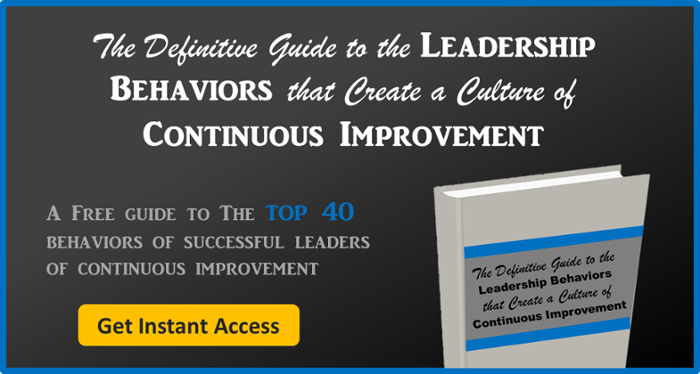 As a leader, you are probably interested in organizational citizenship behaviors (OCBs), even if you aren’t familiar with the term. These are the behaviors which aim to improve the organization, but which are not – and cannot – be regulated by formal job descriptions or contracts. Basically, think of all the things you are required to do; OCBs are all the extra things that are “above and beyond.” These include helping teammates, staying late to complete assignments, proactively making changes for the better, and speaking up with suggestions for improvement. These promote a stable work environment and challenge the status quo, both of which are vital to organizational learning.
As a leader, you are probably interested in organizational citizenship behaviors (OCBs), even if you aren’t familiar with the term. These are the behaviors which aim to improve the organization, but which are not – and cannot – be regulated by formal job descriptions or contracts. Basically, think of all the things you are required to do; OCBs are all the extra things that are “above and beyond.” These include helping teammates, staying late to complete assignments, proactively making changes for the better, and speaking up with suggestions for improvement. These promote a stable work environment and challenge the status quo, both of which are vital to organizational learning.
In our study “Quitting Before Leaving: The Mediating Effects of Psychological Attachment and Detachment on Voice,” James Detert, Dan Chiaburu, and I focus on the psychological mechanisms that underlay a challenging OCB they call “voice to supervisors,” which is essentially employees speaking up to their superiors with opportunities for improvement.
In this study, we examine what makes employees more or less likely to speak up with their ideas for improvement. Here’s what we found.
-
Detachment
Employees who are detached from the organization are less likely to communicate their ideas to their supervisors. In detaching from the organization, employees disengage themselves from their involvement in the organization; they work and care less. Ironically, this means that they psychologically quit before physically exiting, as they display less motivation to expend discretionary energy on optional things like influencing change.
Why might employees detach? Two dynamics between employees and leaders provide some answers. -
Low Quality Exchanges
Ever have a meeting where you come away feeling drained, like the energy has been sucked out of you? Employees who feel that they have been ignored, unwelcome, or rebuked for speaking up in the past are more likely to experience detachment from the organization. After such low quality exchanges, they are less likely to come forward with improvement opportunities again, and are more likely to emotionally - or physically - check out of the job.
On the other hand, an employee who has had past high quality interaction with leaders - such as feeling that their leader has their back, displays respect, and that their voice is heard- is more likely to have better performance, better satisfaction, increased role clarity, and lowered exit rates. -
Negative Exchanges
If an employee feels that their basic needs are not met or that they are blamed for expressing those needs, they will probably experience anger and fear and, as a result, distance themselves emotionally and psychologically from the organization. As they detach after negative exchanges, they will be more motivated to leave the organization and less likely to make an effort to improve it.
So how do you increase employee engagement and motivation?
By creating a culture of innovation and improvement! Establishing a structure in which improvement becomes a natural extension of every person’s job and employees know that their contribution is valued and considered creates a culture of continuous improvement. Complaints become opportunities, suggestions are met with decisions and actions, and employees are recognized for their insight and participation.
Here are a few things you can do to prevent detachment:
- Invite employee input
- Involve everyone in defining the company’s mission and values
- Act on employee ideas
- Share information and create a high-visibility work environment
- Give feedback
- Acknowledge engaged employees
- Offer learning opportunities
_______________________________________________________________
 Ethan Burris is an Associate Professor at McCombs School of Business at University of Texas in Austin. He is an expert on human behaviors that impact the creativity, productivity, and innovative idea sharing of organizational teams. His research has been included in several top psychology and management journals, including the Academy of Management Journal and the Journal of Applied Psychology, as well as in the Harvard Business Review and the Houston Chronicle.
Ethan Burris is an Associate Professor at McCombs School of Business at University of Texas in Austin. He is an expert on human behaviors that impact the creativity, productivity, and innovative idea sharing of organizational teams. His research has been included in several top psychology and management journals, including the Academy of Management Journal and the Journal of Applied Psychology, as well as in the Harvard Business Review and the Houston Chronicle.



Add a Comment